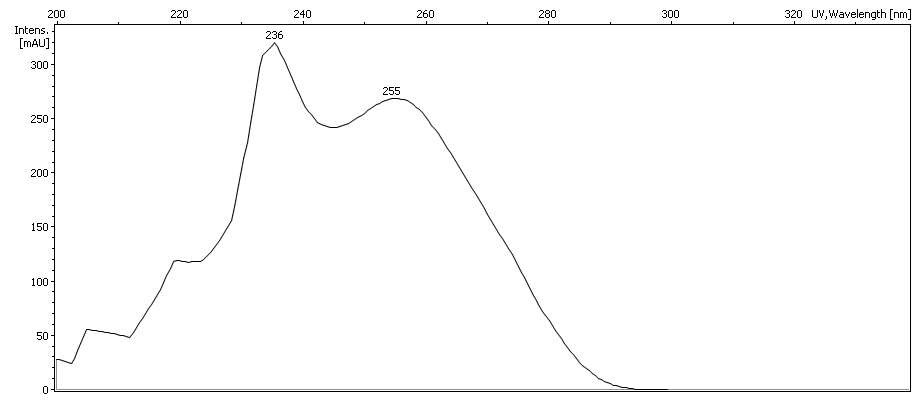E218 on:
[Wikipedia]
[Google]
[Amazon]
 Methylparaben, also methyl paraben, one of the
Methylparaben, also methyl paraben, one of the
Methylparaben
at Hazardous Substances Data Bank
Methylparaben
at Household Products Database * European Commission Scientific Committee on Consumer Products Extended Opinion on the Safety Evaluation of Parabens (2005
{{Phenolic acid Methyl esters Parabens E-number additives Semiochemicals Insect pheromones ja:メチルパラベン
 Methylparaben, also methyl paraben, one of the
Methylparaben, also methyl paraben, one of the parabens
Parabens are a class of widely used preservatives in cosmetic and pharmaceutical products. Chemically, they are a series of parahydroxybenzoates or esters of parahydroxybenzoic acid (also known as 4-hydroxybenzoic acid). Parabens are effective ...
, is a preservative with the chemical formula CH3(C6H4(OH)COO). It is the methyl ester
In chemistry, an ester is a compound derived from an oxoacid (organic or inorganic) in which at least one hydroxyl group () is replaced by an alkoxy group (), as in the substitution reaction of a carboxylic acid and an alcohol. Glycerides a ...
of ''p''-hydroxybenzoic acid.
Natural occurrences
Methylparaben serves as apheromone
A pheromone () is a secreted or excreted chemical factor that triggers a social response in members of the same species. Pheromones are chemicals capable of acting like hormones outside the body of the secreting individual, to affect the behavio ...
for a variety of insects and is a component of queen mandibular pheromone Queen mandibular pheromone, or QMP, is a honey bee pheromone produced by the queen and fed to her attendants who share it with the rest of the colony that gives the colony the sense of belonging to the queen. Newly emerged queens produce very little ...
.
It is a pheromone in wolves produced during estrus
The estrous cycle (, originally ) is the set of recurring physiological changes that are induced by reproductive hormones in most mammalian therian females. Estrous cycles start after sexual maturity in females and are interrupted by anestrous ...
associated with the behavior of alpha male wolves preventing other males from mounting females in heat.
Uses
Methylparaben is an anti-fungal agent often used in a variety of cosmetics and personal-care products. It is also used as a food preservative and has the E number E218. Methylparaben is commonly used as a fungicide in ''Drosophila
''Drosophila'' () is a genus of flies, belonging to the family Drosophilidae, whose members are often called "small fruit flies" or (less frequently) pomace flies, vinegar flies, or wine flies, a reference to the characteristic of many speci ...
'' food media at 0.1%. To ''Drosophila'', methylparaben is toxic
Toxicity is the degree to which a chemical substance or a particular mixture of substances can damage an organism. Toxicity can refer to the effect on a whole organism, such as an animal, bacterium, or plant, as well as the effect on a subs ...
at higher concentrations, has an estrogen
Estrogen or oestrogen is a category of sex hormone responsible for the development and regulation of the female reproductive system and secondary sex characteristics. There are three major endogenous estrogens that have estrogenic hormonal ac ...
ic effect (mimicking estrogen in rats and having anti-androgenic
An androgen (from Greek ''andr-'', the stem of the word meaning "man") is any natural or synthetic steroid hormone that regulates the development and maintenance of male characteristics in vertebrates by binding to androgen receptors. This incl ...
activity), and slows the growth rate in the larval and pupal stages at 0.2%.
Safety
There is controversy about whether methylparaben or propylparabens are harmful at concentrations typically used in body care or cosmetics. Methylparaben andpropylparaben
Propylparaben, the ''n''-propyl ester of ''p''-hydroxybenzoic acid, occurs as a natural substance found in many plants and some insects, although it is manufactured synthetically for use in cosmetics, pharmaceuticals, and foods. It is a member ...
are considered generally recognized as safe (GRAS) by the USFDA
The United States Food and Drug Administration (FDA or US FDA) is a federal agency of the Department of Health and Human Services. The FDA is responsible for protecting and promoting public health through the control and supervision of food s ...
for food and cosmetic antibacterial preservation. Methylparaben is readily metabolized by common soil bacteria, making it completely biodegradable.
Methylparaben is readily absorbed from the gastrointestinal tract or through the skin. It is hydrolyzed to ''p''-hydroxybenzoic acid and rapidly excreted in urine without accumulating in the body. Acute toxicity studies have shown that methylparaben is practically non-toxic by both oral and parenteral
A route of administration in pharmacology and toxicology is the way by which a drug, fluid, poison, or other substance is taken into the body.
Routes of administration are generally classified by the location at which the substance is applied. ...
administration in animals. In a population with normal skin, methylparaben is practically non-irritating and non-sensitizing; however, allergic reactions to ingested parabens have been reported. A 2008 study found no competitive binding for human estrogen and androgen receptors for methylparaben, but varying levels of competitive binding were seen with butyl- and isobutyl-paraben.
Studies indicate that methylparaben applied on the skin may react with UVB
Ultraviolet (UV) is a form of electromagnetic radiation with wavelength from 10 nm (with a corresponding frequency around 30 PHz) to 400 nm (750 THz), shorter than that of visible light, but longer than X-rays. UV radiation i ...
, leading to increased skin aging and DNA damage.
References
External links
Methylparaben
at Hazardous Substances Data Bank
Methylparaben
at Household Products Database * European Commission Scientific Committee on Consumer Products Extended Opinion on the Safety Evaluation of Parabens (2005
{{Phenolic acid Methyl esters Parabens E-number additives Semiochemicals Insect pheromones ja:メチルパラベン